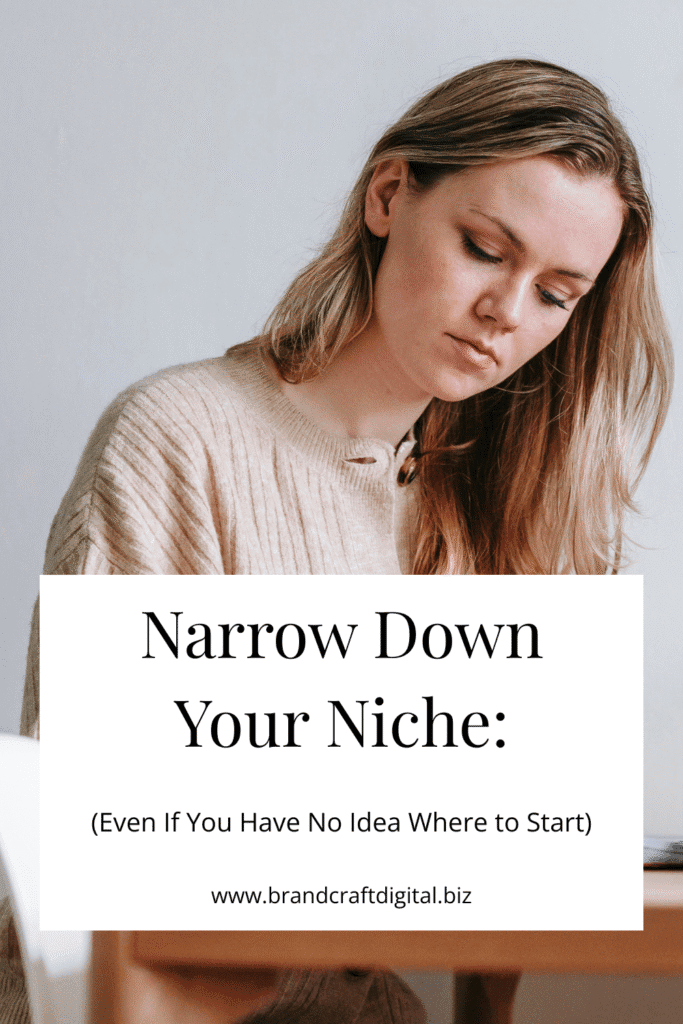This post may contain affiliate links. You can read my full affiliate disclosure here.
So, you want to start a blog, sell digital products, or launch an online business—but you’re stuck on one big thing: choosing a niche. Sound familiar?
You’re not alone. Picking a niche can feel overwhelming, especially when you have a lot of interests. But here’s the truth: narrowing down your niche is one of the best things you can do to grow online faster and with less stress.
In this post, I’ll walk you through what a niche is, why it matters, and how to find yours. Whether you’re just getting started or want to tighten up your focus, this guide will help.
What Is a Niche Anyway?
A niche is a specific topic or audience that your content or business focuses on. Instead of trying to speak to everyone, you talk to a group of people who care about a certain subject. Think of it like finding your people on the internet.
Some examples of niches:
- Healthy recipes for busy moms
- Budget travel for couples over 50
- Digital marketing for beginners
- Side hustles for teachers
The more specific your niche, the easier it is to stand out and attract the right audience.
Why You Should Narrow Down
It may sound scary to “go smaller,” but narrowing your niche actually helps you grow faster.
Here’s why:
- People trust experts. When you focus on one thing, you become known for it.
- Content becomes easier. You always know what to write, post, or promote.
- You attract your ideal people. Instead of random visitors, you’ll build a real community.
- It saves time. You won’t waste hours trying to be everything to everyone.
“If you’re talking to everyone, you’re talking to no one.” – Meredith Hill

Step 1: Write Down What You Love
Grab a notebook and jot down everything you’re interested in. What could you talk about for hours? What do people ask you for help with? What do you Google when you’re relaxing?
Some prompts to help:
- What are your hobbies?
- What problems have you solved in your life?
- What would you still do if no one paid you?
Step 2: Think About Who You Want to Help
Now that you have a list of topics, ask yourself: Who do I want to help?
Maybe it’s:
- Women over 40 who want to earn online
- Moms with toddlers looking for activities
- Retired teachers who want to start a blog
Picture one person. What’s their day like? What are they struggling with? If you can solve a problem they have, you’re already ahead.

Step 3: Find the Overlap
Your sweet spot is where your interests and other people’s needs meet.
Let’s say:
- You love digital marketing
- You’re passionate about teaching others
- And you’ve learned how to grow your Pinterest account
Now combine those into a niche: “Helping midlife women use Pinterest to grow a digital business.”
Simple. Focused. Clear.
Step 4: Test Before You Commit
You don’t need to have everything perfect on day one. Create content, test ideas, and listen to what your audience cares about.
Try:
- Writing a few blog posts
- Posting some Pinterest pins
- Asking questions on social media
The more you share, the more clues you’ll get about what works.
Step 5: Let It Evolve
Your niche can grow with you. Don’t worry if you change your focus later. What matters is starting. Think of your niche as your starting lane, not your forever box.
“Start where you are. Use what you have. Do what you can.” – Arthur Ashe
A Quick Niche Checklist
Use this to test your niche idea:
- ✅ Is it something you enjoy?
- ✅ Is it something people search for?
- ✅ Can you help someone with this topic?
- ✅ Can you make or promote products in this niche?
If you answered yes to most of these, you’ve got something strong.
Final Thoughts
Don’t overthink your niche. You don’t need to “find your forever.” You just need to get specific enough to start. Trust that clarity comes with action.
Pick one thing. Try it. Tweak it later if you need to.
You’ve got this.
💡 Ready to Start Earning Online?
Grab your FREE copy of “10 Digital Income Ideas for Women Over 40 (That You Can Start This Week)” and discover simple, beginner-friendly ways to create income from home—without tech headaches or overwhelm.

